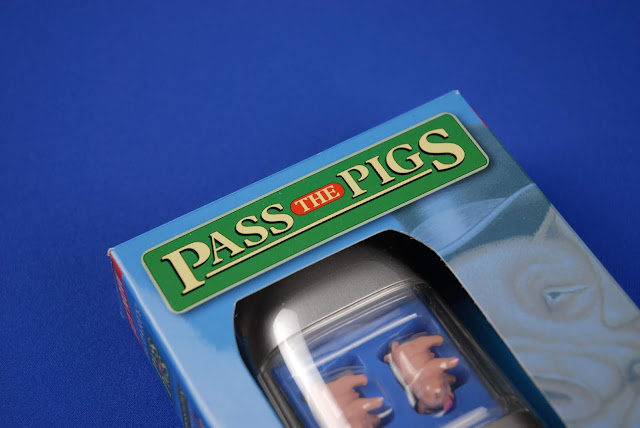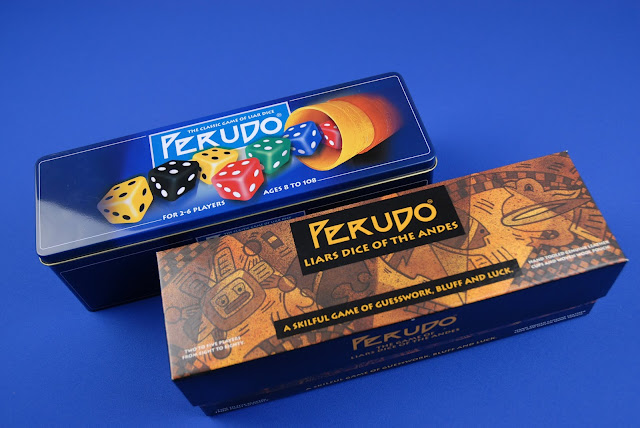Review: Patchwork
Players: 2
Ages: 8+
Time to play: 15-30 minutes
Board gaming can be tough sometimes, with so many similar games on the market it can be difficult to find something new and interesting, something which sparks that sense of excitement. I must confess that I was in a bit of a lull, biding my time with the familiar and quite frankly just making do.
So imagine my glee when I was presented with "patchwork" which is based on the heady and testosterone filled world of patchwork quilt making. As soon as I saw it, I threw my knitting needles into the air and screamed with delight. Finally! I thought... a game I can get my teeth into.
Today I'll be reviewing Patchwork - a tile laying strategy game for two players designed by Uwe Rosenberg and released in 2014.
Patchwork is a curious game that sees you purchasing different shaped patches of fabric to create a quilt by filling the squares on a grid that you have in front of you in a kind of Tetris style. You use buttons as currency and the games length is determined by a concept called time, which runs down after every patch that you acquire. The game ends when each player has reached the end of the time track (effectively running out of time).
Inside the box you'll find a lovely reversible time track and two quilt boards (laid out in a 9x9 grid). There are 2 wooden time markers (one for each player) and a wooden neutral marker so you know where to pick your next patches from. Also included are 33 patch tiles a 7x7 bonus tile and a load of buttons.
The game setup is straightforward, each player takes some buttons and a quilt board which they place in front of them. The time track is placed in the centre of the gaming space, with each players marker a the start of the track. The bonus patches are also placed on their spots on the track.
All of various shaped patches are mixed up and placed side by side in a large circle (like a clock face) around the time track and between the two players. The neutral marker is placed to the right of the smallest (2 x 1) piece.
The other buttons and the 7 x 7 bonus tile are placed within reach of the players.
So, how does your turn work? Well during the course of your turn you do one of two things, firstly, you could "purchase" a piece of patchwork quilt to place on your board using your buttons (the cost of which is depicted on the patch).
If you decide you want to purchase a patch, then you can only choose from the first three patches after the wooden neutral token. Once a patch has been taken, the neutral token is placed in it's space, which now creates a different selection of patches for the next turn.
The second action is harvesting buttons (if you want more buttons) by simply moving your time token along the track until it stops one space ahead of your rival. You get as many buttons as spaces that your time token travelled.
Now this leads me to my favourite mechanic in the game, which is the time track and the concept of "time". On each of the patches that you can buy there are usually a number of large buttons depicted anywhere on the patch (which I'll get to later) and two smaller values depicted on a ticket at the bottom of the patch. Of the two values on the ticket, one is the purchase cost of the patch in buttons and the second is the time that it takes to sew the patch. Typically, the larger the patch, the more time it takes to sew it on.
When a player takes a patch after paying the cost in buttons and placing the tile, they move their time marker along the time track. The time track has a limited length, and as I mentioned before, when a players time token reaches the end of the track their game ends as they have ran out of turns.
Now the interesting thing about the time track is that it determines the turn order... you see, you don't necessarily take it in turns to play patchwork. It's the player who's time token is farthest back on the time track who takes the next turn. So with a bit of careful consideration as to what patches to pick up, a player could take a number of turns (and subsequently patches) before their time token passes the other player on the track and their turn streak ends.
In addition to this, at regular intervals along the time track there are button markers and a few bonus patch markers which have handy little 1 x 1 patches on. The first player to pass a patch marker on the time track gets to keep it and place it on their board.
Now the button markers on the time track tie in directly to the large buttons that are on your patches which make up your quilt. Every time a player passes a button marker on the time track, they receive a payment of buttons equal to the number of buttons that they have on their quilt.
So simply put, if your quilt has 7 buttons on it, you will receive 7 buttons in payment, which you can use to buy more patches. Which in turn, may have more buttons on them - which will make you even more money when you pass the next button marker on the time track. You see where I'm going with this?
The game finishes when each player reaches the end of the time track in which case their buttons are directly converted into victory points. For every unfilled space on the board, 2 victory points are subtracted from that players score.
As I've pretty much explained the entire rules, I may as well mention that there is a bonus objective tile worth 7 points for the first person to complete a 7 x 7 grid inside their own 9 x 9 grid... Rules complete!
Patchwork is great fun to play, and is a game which has a definite gaming arc. So you'll find that at the beginning of the game, it's mostly about grabbing patches and filling up your board to clear up as much empty space as possible.
During the mid-game the free space on both players grids is now becoming tighter so your forced to be more choosy about the tiles you pick. Both of you will be eyeballing the pieces that you need, hoping that you can land of them. But of course the perfect pieces that you need to fill those uniquely shaped areas on your grid are not only obvious to you, but obvious to your opponent too. So this is the best time to sabotage your opponents progress, but this of course could come at the cost of you completing your own grid.
The endgame phase is when time is running out, and your options are extremely limited. You're either in a position where your quilt is looking pretty good... or pretty bad, in which case you're making choices based on damage limitation. Your pretty much taking what you can get, to get your quilt as complete as possible. But you've also got to bear in mind the cost of the patches, after all buttons are victory points, so it might actually be worth keeping them rather than spending them.
During the course of the game, the mechanics make for varied and interesting game play. At points you'll be playing in a reactive style after each of your opponents turns, but also (if you have enough time) you can chain a number of moves and apply some strategy to maximise your gains.
Also, the small rewards on the time track such as bonus patches and button payouts really make you push to squeeze the maximum benefit out of your turn. This could mean that your sometimes going for a slightly worse patch so you can get the time you need to take another turn or maybe choosing a patch that will allow you to cross a button marker to get an early payout.
When you take into account all these things; the 7x7 bonus tile, the button management, patch placement, the strategic use of time, and the opportunities to stitch up your opponent (excuse the pun). You realise that patchwork is a tight, complex and sometimes ruthless game. But it doesn't feel tight, complex or ruthless at all... It feels cosy and fun.
Because of this, patchwork is already one of my favourite games, and is one that keeps coming back to the table time after time. It's perfectly balanced for two players, is so quick to play and it's so addictive and satisfying creating your quilt. The simple mechanics make the game very easy to learn for new players and there's enough strategy and variety in the setup to make every game feel different and challenging.
I can't really think of a bad thing to say about it.
You can pick up Patchwork here.








Comments
Post a Comment